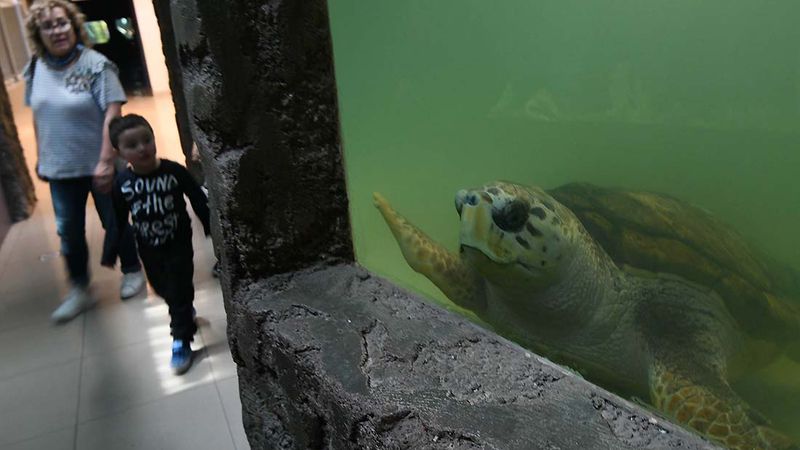The tortugo Jorge was finally released on April 11 off the coast of Mar del Plata after spending 40 years in captivity.
The surprising thing is that since then, his journey in open sea can be tracked through satellite. They placed a tracker on his shell.
How long will we be able to track tortugo Jorge?
 Tortugo Jorge returned to freedom.
Tortugo Jorge returned to freedom.
Jorge’s tracker emits signals that allow scientists to know his location in real time. However, the duration of the transmission depends on several factors:
-
Device battery: usually lasts between 6 months and 1 year, although it may vary depending on usage.
-
Environmental conditions: accumulation of marine organisms on the sensors may interfere with the signal.
-
Physical interactions: impacts with floating objects or accidental capture can damage the device.
Currently, tracking indicates that Jorge, after passing the Uruguayan coasts, is in the waters of Brazil, where turtles of his species usually nest.
Researchers receive daily updates on his location, allowing them to closely monitor his adaptation to the Atlantic Ocean.
Tracking Jorge is not only relevant for his well-being but also for the conservation of sea turtles in general. The information obtained helps to better understand their migratory patterns, feeding habits, and habitat needs, thus contributing to more effective protection strategies.
So, how long will researchers be able to know where tortugo Jorge is? According to CONICET researcher Mariela Dassis to MDZ, that will mainly depend on the batteries, “how long the antenna lasts, and that incrusting organisms do not cover the conductivity sensors: those are the three influencing factors.”
Although the average duration is six months, there have been cases where turtles were tracked for up to two years.
Tortugo Jorge passed through Uruguay
By the end of April, the data indicated that the animal was in optimal conditions, showing normal behavior for its species.
Despite the inherent risks in its habitat, such as industrial fishing, specialists assure that it remains in good condition. This monitoring represents an important step in the efforts to protect a vulnerable species like this one.
By that time, it had traveled over 500 kilometers and reached Uruguay.
The story of Jorge
 Tortugo Jorge returned to the sea after 40 years.
Tortugo Jorge returned to the sea after 40 years.
The sea turtle spent 38 years in captivity at the former municipal aquarium in Mendoza, now transformed into a Center for Biodiversity Conservation.
He arrived in the province in March 1984, coming from Bahía Blanca and at 30 years old (approximately). During all this time, he lived in a pond at this site (now closed and transformed into a biodiversity conservation center), until in October 2022 he was transferred to the Marine Fauna Rehabilitation Center in Mar del Plata.
Upon arriving in Mar del Plata, he was moved to a larger space, where he regained strength and began his training to dive. Initially, the water depth was one and a half meters, as turtles need to surface to breathe.
Jorge quickly adapted to this process and to the saltwater, to which he had been gradually exposed in Mendoza.
To stimulate his hunting instinct, crabs were introduced into his habitat. Later, “stingrays” (small rays) were added, forcing him to compete for his food. Despite the difficulties, Jorge showed that his hunting instinct was intact.
When he was ready for release, after almost 40 years of captivity, it brought joy and excitement to both the biologists and aquarium workers as well as the city residents who had known him during his time at the site.

